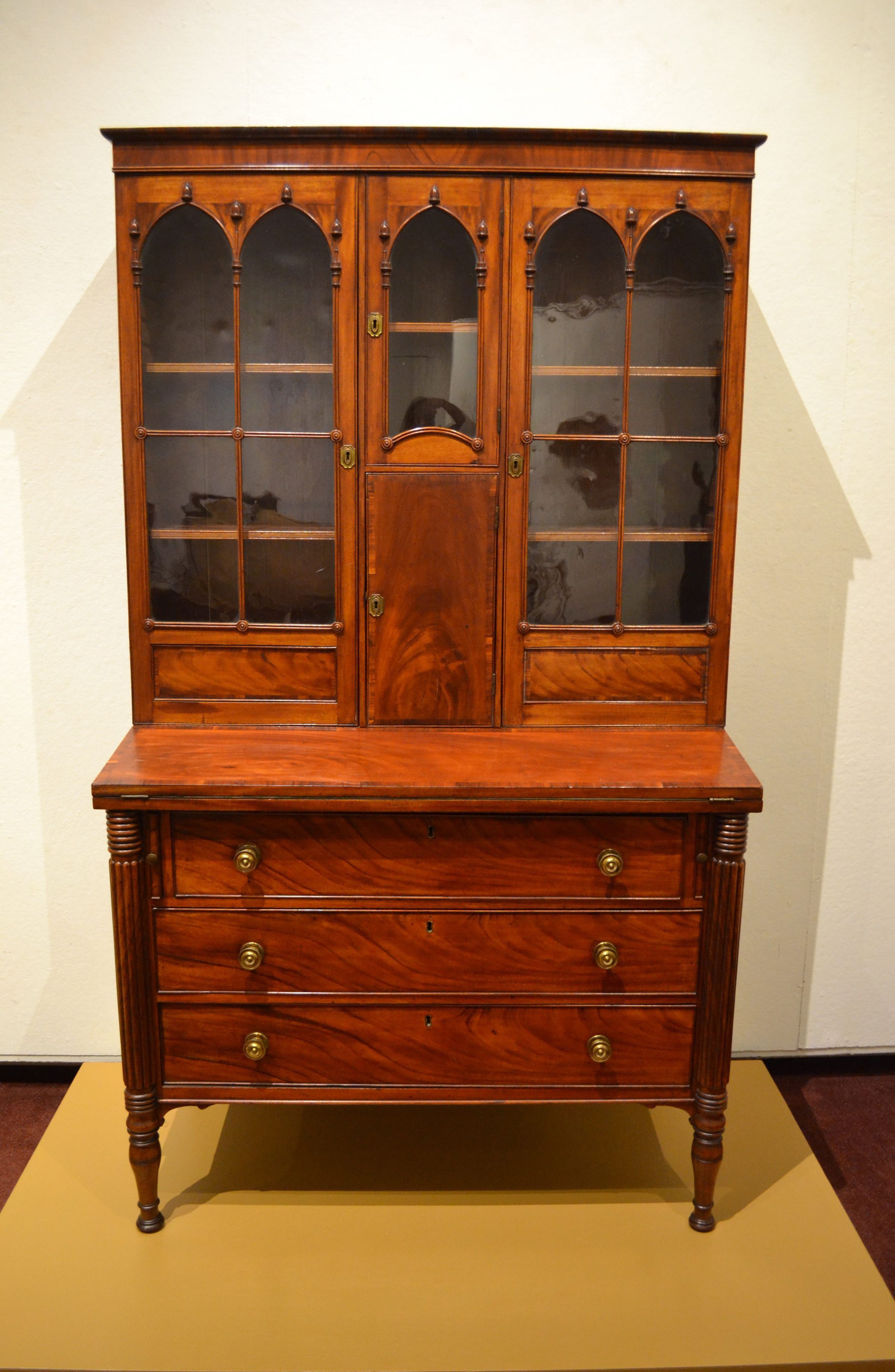Label Type
Object LabelLabel
Secretary Bookcase, circa 1815-1820
probably Portland
mahogany, mahogany and other veneers, pine
Bequest of Dorothy Dennett
Label Type
Cultural/Historical ContextLabel
This is one of at least three similar secretaries with local histories of ownership. One, with the same unusual turned elements on the doors, has a history in Limington, Maine. The acorn-like ornaments may be Phrygian, or Liberty, caps, a popular motif during the War of 1812 and while Maine was trying to gain its independence from Massachusetts. The upper case may have an odd number of doors because the center was designed to accommodate a clock and its weights. The original owner of this piece may have found the overall design appealing, but been unwilling to go to the additional expense of incorporating a timepiece. This secretary lacks its original pediment and finials, which would have looked much like those on the secretary to the left.
